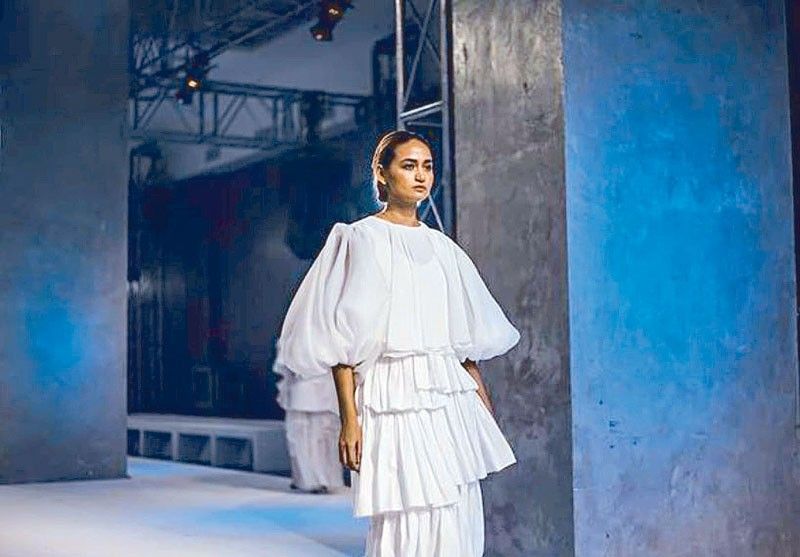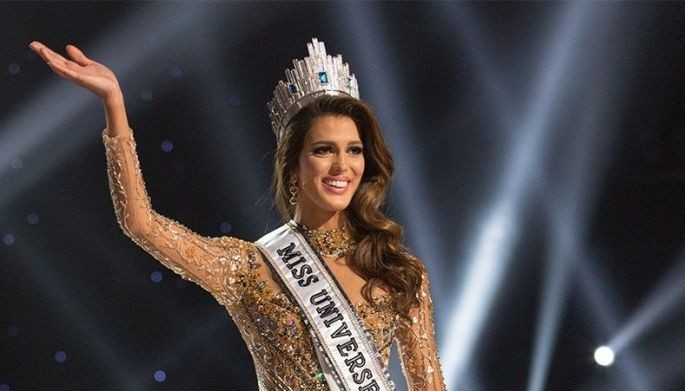Rediscovering the modern filipino

Poblacion, Makati, during Cinco De Mayo might be the craziest, packed night that we may (or may not) remember. Poblacion, Makati, during Araw ng Kalayaan? Not so much.
Araw ng Kasarinian, or Araw ng Kalayaan, is an annual national holiday in the Philippines observed on June 12 celebrate the declaration of Philippine Independence from Spain in 1898.

But for the longest time, June 12 was only seen as a non-working holiday in our eyes. The day only reminded us that banks are closed and we don’t have to wake up for work or go to school. Okay, we might’ve gone once or twice to Kawit, Cavite, to visit the Aguinaldo Shrine, but celebrating Philippine Independence Day isn’t really a tradition of the past, nor a day to share what it means to be Filipino with the rest of the world.
In Niels Mulder’s 2013 research on “Filipino Identity: The Haunting Question,” he says, “We are happily unaware that such national days have been created to celebrate the state and to evoke the spirit of nationalism.”
Why? It’s because of our search for the Filipino identity.
But how does the Modern Filipino identify this?

The answer lies in asking Filipinos to live out culture collectively, consciously, and consistently, as it becomes our soft power in this globalized world. Maybe through one Filipino day or using a #hashtag to be the gateway to our diverse Filipino culture?
The modern filipino
Growing up in Bulacan, it was normal to be stuck in traffic following a horse-drawn, bamboo carriage with baskets and walis. Barangays celebrate their fiestas with an oiled-up Palo Sebo with Justin Bieber in the background. A busy MacArthur Highway slows down because of a mile-long procession of saints, as cars line up on the side waiting for flower-decked karos to pass.
My parents gave me Nick Joaquin and Lola Basyang books to read alongside the Harry Potter series. Eraserheads’ “Ultraelectromagneticpop” was playing as we started a long drive to the Sagada. This was my definition of Filipino culture.

Exposed to different cultures in this rapid age of the fourth industrial revolution, living in a Southeast Asian country with over 7,640 islands and more than 111 dialects, colonized and influenced by the Spanish, Americans, Chinese and Japanese, one cannot expect a singular definition of Filipino culture.
#DamaKoLahiKo is a campaign that encourages Filipinos from all over to appreciate, celebrate and contribute our being Filipino as we constantly weave our identity this June 12. Through talking to Filipinos and the Filipino diaspora via Zoom, it is fascinating how all campaign meetings end up with “My mind is now running with ideas!” This sense of pride and excitement about being Filipino is something to look forward to.
Proving that the Filipino culture is a creative culture, here are stories on how our identity is felt across the world. May we hear more of these stories through #DamaKoLahiKo!
Panlasa (Taste)
Since Anthony Bourdain, there has been nonstop creation of Filipino food from all over. Donuts by Kora, a Filipino-owned bakery in the US and inspired by Kimberly Camara’s lola, has been spreading that Filipino taste in the most unique way, with a waiting list to prove it. With flavors featuring halo-halo, pinipig and leche flan, these donuts show that Filipino joy goes beyond our local red bee.

Another US-based food hub, Tradisyon is a restaurant that offers Filipino comfort food at New York City’s Hell’s Kitchen (30 years ago it was an area of Filipino institutions). Founded by owner Joey Chanco, and chefs Anton Dayrit and Bianca Vicente, they serve another uniquely Filipino dessert: a Frozen Taho popsicle, drizzled with brown sugar syrup on top. Something more fruity? Our humble calamansi shows up as a Calamansi-Lime Meringue popsicle.
While on our local shores, we’ve seen how Toyo Eatery by Jordy Navarra has joyfully served and surprised us with the Bahay Kubo, a dish that includes all the 18 vegetables mentioned in the Filipino nursery rhyme. The Best Restaurant in the Philippines and one of Asia’s 50 Best has been inspiring regarding how we can reinterpret our culture and heritage through Filipino food. Look at how Hapag’s Thirdy Dolatre popularized the Laing Stones to become a popular desert.
Paningin (Sight)

Proudrace, a contemporary brand founded by Patrick Bondoc and Rik Rasos in 2012, is a reflection of our nation. Coming from a random conversation with a friend, wondering why we are all incognito when we should be a proud race, the brand has been presenting Filipino fashion in a new light. With offbeat references rooted in the city’s underground scene, their distinct style landed them in Vogue Italia “Talents” and is available all over the world.
Virality is one thing that the Filipino knows how to do and #RP612fic has been trending since 2014. The movement, started by Philippine Alternative Mythology writer Paolo Chikiamco, is a celebration of Filipino creativity through the written word. Filipino mythology or historical events viewed through a mythological lens, the movement has grown in popularity with prominent participant Budjette Tan of Trese contributing to a growing #RP612fic world.

Pandinig (Hearing)
One of my first few calls was with Sa Tahanan, an art collective founded by Anna Bernice and Augustine Parades, who are working creatives in Dubai. Just recently, they had an open call to Filipino poets and provided a platform for Filipinos to share at one of Dubai’s contemporary art hubs. A quick talk with them led me to conclude that, wherever you are in the world, discovering the roots of being Filipino is something that we crave.
Up Dharma Down (UDD), has been prominent in the music scene since 2004 with hits like Oo and Tadhana on everyone’s Filipino Spotify playlist. An example that our Filipino creatives can transcend cultures, the band curated an album specifically for their Japanese audience, even casting Terrace House’s Mizuki Shida for their music video Sigurado and a Japanese version of their song Luna.

Pang-amoy (Smell)
Established in 2018, Saan Saan’s homemade candles have been inspired by the seasons and travels of its founder. With scents called Kung Tag-Araw, Old Manila and Baker Street of Poblacion, Mark Zavalla has identified unique places and nostalgia for the Philippines in a jar.

Born and raised in Manila, and now based in Brooklyn, Agos Muni NY carries the floral creations of creative director Miguel Yatco. With beautiful arrangements for Calvin Klein, Medea and Peter Do, smelling good means looking good, too.
Pansalat (Touch)
Working in the fashion and creative industry has led me to several weavers and local textile producers, one of which is Luis Agaid Jr. The head of the Namarabar Indigo Natural Dye Producers Cooperative (NAMARABAR), Agaid caught me by surprise with the information that we do have our own local indigo dye here in the Philippines. He is a descendant of a master weaver of the Itneg in Abra, inherited his passion from his father and is taking on the challenge of reviving their rich textile heritage through dyeing and hand embroidery.
And finally Habi, the Philippine Textile Council, has been promoting our piña and reviving our local weaves since 2009. A Zoom call with Len Cabili, the main proponent of #DamaKoLahiKo and founder of Filip+Inna, led me to gawk at the amazing textures the Aklan-based weaver Raquel R.Eliserio’s piña work onscreen. Platforms like Habi take the tradition and workmanship of weaving piña and help it stand the test of these modern times.

Our culture has always been centered on creativity and community. Our resiliency as a nation proves that we don’t need much to create something impactful and big, be it food, fashion, or the arts. Those stories are only a small part of this cultural fabric that we’re trying to weave.
These modern celebrations of culture don’t aim to be traditional but rather impress the importance of our roots. My designs have always been modern but unless I tell you about it, you will never know that the stripes are draped to mimic the tapis, or an all-black collection with a bandana is inspired by the Filipinos’ tradition of celebrating death, called Babang Luksa. Culture is key in creating artistic expressions and innovation. We come back to our core to explore something true and genuine.
The meaning of Independence Day is not driven by a sole campaign or singular entity, brand or agency. Let’s make June 12 feel like this nation belongs to the people, and impress our responsibility on each Filipino to contribute in forming and sharing our cultural picture with the world.
‘Take what you can, give what you can.” #DamaKoLahiKo is just a start; it’s now in your hands to create and truly celebrate it. Share your tablescape, serve your favorite Filipino food or talk about how the kutsinta pairs very well with dulce de leche and is the stickiest kakanin in the land.
Let this Independence Day and a hashtag be a sneak peek for the world to join us in a smorgasboard of Filipino culture everyone can enjoy. And after this whole pandemic is over, let’s march to Poblacion and fill it up with us dancing with lechon tacos and gin drinks in our hands.

* * *
Visit www.DamaKoLahiKo.com , Facebook: Dama Ko, Lahi Ko, Instagram: @damakolahiko, YouTube: Dama ko, Lahi ko, TikTok: damakolahiko, Twitter: damakolahiko.
* * *
Esme Palaganas is the founder of Basic Movement and co-founder of PH x Fashion Conference. She was a finalist at the first ever Bench Design Awards and the Philippine Representative at Kuala Lumpur Fashion Week Young Design Awards. She received a Special Recognition in Fashion Design at the Philippine Fashion Ball and is currently the Policy & Planning chairman of the Philippine Fashion Coalition.
Her particular interests are the intersection of culture, fashion, and technology. A proud Bulakenya and fashion consultant, you can reach her at esme@phxfashion.org.



















